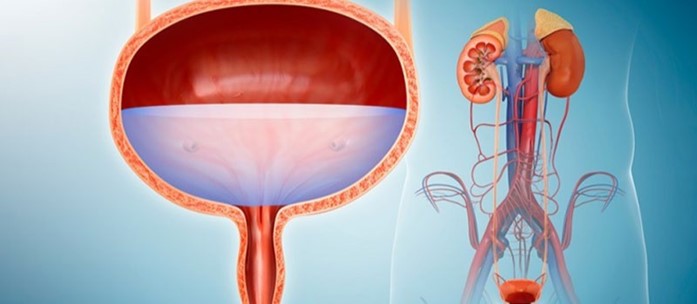The practical nurse (PN) is assigning care for a group of clients on the urology medical unit. Which client care interventions should the PN assign to the unlicensed assistive personnel (UAP)? (Select all that apply)
Transport a urine culture sample to the laboratory
Obtain a post-voided residual (PVR) volume
Teach the client with fluid restrictions how to measure urine output
Irrigate an indwelling urinary catheter for a client with bladder suspension
Empty bedside drainage unit for a client with indwelling urinary catheter
Correct Answer : A,E
The correct answers are:
a) Transport a urine culture sample to the laboratory. Correct
This is a client care intervention that the PN can assign to the UAP. Transporting a urine culture sample to the laboratory is a routine and non-invasive task that does not require clinical judgment or skill. The UAP should follow the standard precautions and protocols for handling and labeling the specimen.
b) Obtain a post-voided residual (PVR) volume.
This is not a client care intervention that the PN can assign to the UAP. Obtaining a post-voided residual (PVR) volume is a procedure that requires clinical judgment and skill, as it involves using a bladder scanner or catheterizing the client to measure the amount of urine left in the bladder after voiding.
The UAP is not trained or authorized to perform this task, and it should be done by the PN or another licensed nurse.
c) Teach the client with fluid restrictions how to measure urine output.
This is not a client care intervention that the PN can assign to the UAP. Teaching the client with fluid restrictions how to measure urine output is an educational activity that requires clinical judgment and skill, as it involves assessing the client's learning needs, providing clear and accurate instructions, and evaluating the client's understanding and compliance. The UAP is not trained or authorized to perform this task, and it should be done by the PN or another licensed nurse.
d) Irrigate an indwelling urinary catheter for a client with bladder suspension.
This is not a client care intervention that the PN can assign to the UAP. Irrigating an indwelling urinary catheter for a client with bladder suspension is a procedure that requires clinical judgment and skill, as it involves inserting sterile fluid into the bladder through the catheter to flush out any clots, debris, or bacteria. The UAP is not trained or authorized to perform this task, and it should be done by the PN or another licensed nurse.
e) Empty bedside drainage unit for a client with indwelling urinary catheter. Correct
This is a client care intervention that the PN can assign to the UAP. Emptying bedside drainage unit for a client with indwelling urinary catheter is a routine and non-invasive task that does not require clinical judgment or skill. The UAP should follow the standard precautions and protocols for emptying, measuring, and recording the urine output.
 |
Nursing Test Bank
Naxlex Comprehensive Predictor Exams
Related Questions
Correct Answer is C
Explanation
Choice A reason: "Repeat dose in 1 hour for unrelieved headachE." This instruction is incorrect because sumatriptan should not be taken more than twice in 24 hours.
Choice B reason: "Chew tablet well before swallowinG." This instruction is unnecessary because sumatriptan tablets are meant to be swallowed whole with water.
Choice C reason: "If you experience chest pain, call your physician immediately." This instruction is important because sumatriptan can cause coronary vasospasm, which can lead to angina or myocardial infarction.
Choice D reason: "Take daily to prevent headaches." This instruction is inappropriate because sumatriptan is used to treat acute migraine attacks, not to prevent them.
Correct Answer is B
Explanation
Choice A reason: Advances in surgical techniques and procedures have improved the quality of life and survival rates for many patients, but they are not the main factor for the increase in life expectancy in the twentieth century.
Choice B reason: Sanitation and other public health activities, such as vaccination, safe water supply, sewage disposal, and food safety, have reduced the incidence and mortality of infectious diseases, which were the leading causes of death in the past. These activities have had a significant impact on increasing life expectancy in the twentieth century.
Choice C reason: Technology increases in the field of medical laboratory research have enabled better diagnosis and treatment of diseases, but they are not the primary reason for the increase in life expectancy in the twentieth century.
Choice D reason: Use of antibiotics to fight infections has saved many lives and prevented complications from bacterial diseases, but they are not the most important factor for the increase in life expectancy in the twentieth century. Moreover, antibiotics were not widely available until after World War II, which means they did not contribute much to the increase in life expectancy before that perioD.
Whether you are a student looking to ace your exams or a practicing nurse seeking to enhance your expertise , our nursing education contents will empower you with the confidence and competence to make a difference in the lives of patients and become a respected leader in the healthcare field.
Visit Naxlex, invest in your future and unlock endless possibilities with our unparalleled nursing education contents today
Report Wrong Answer on the Current Question
Do you disagree with the answer? If yes, what is your expected answer? Explain.
Kindly be descriptive with the issue you are facing.
